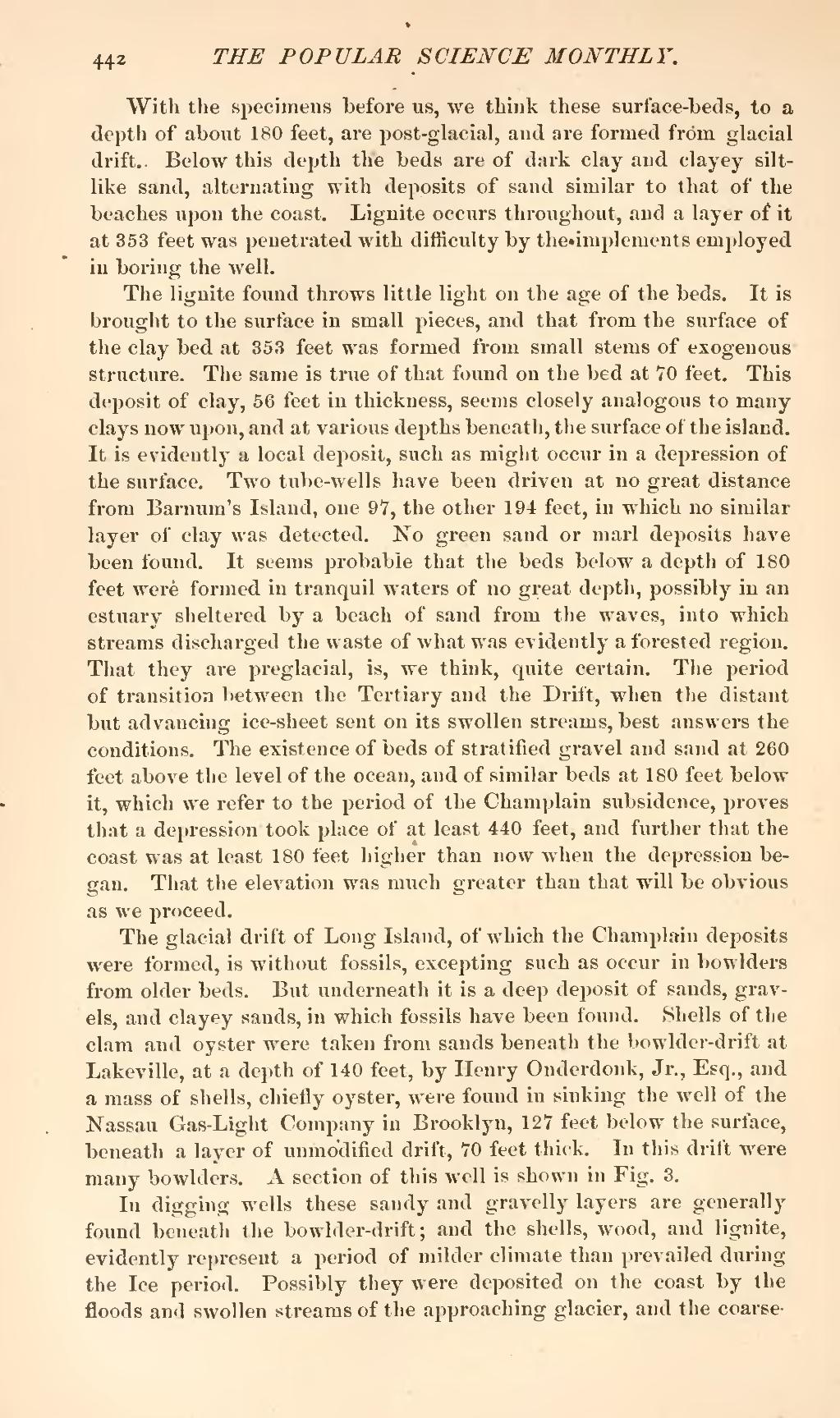With the specimens before us, we think these surface-beds, to a depth of about 180 feet, are post-glacial, and are formed from glacial drift.. Below this depth the beds are of dark clay and clayey silt-like sand, alternating with deposits of sand similar to that of the beaches upon the coast. Lignite occurs throughout, and a layer of it at 353 feet was penetrated with difficulty by the implements employed in boring the well.
The lignite found throws little light on the age of the beds. It is brought to the surface in small pieces, and that from the surface of the clay bed at 353 feet was formed from small stems of exogenous structure. The same is true of that found on the bed at 70 feet. This deposit of clay, 56 feet in thickness, seems closely analogous to many clays now upon, and at various depths beneath, the surface of the island. It is evidently a local deposit, such as might occur in a depression of the surface. Two tube-wells have been driven at no great distance from Barnum's Island, one 97, the other 194 feet, in which no similar layer of clay was detected. No green sand or marl deposits have been found. It seems probable that the beds below a depth of 180 feet were formed in tranquil waters of no great depth, possibly in an estuary sheltered by a beach of sand from the waves, into which streams discharged the waste of what was evidently a forested region. That they are preglacial, is, we think, quite certain. The period of transition between the Tertiary and the Drift, when the distant but advancing ice-sheet sent on its swollen streams, best answers the conditions. The existence of beds of stratified gravel and sand at 260 feet above the level of the ocean, and of similar beds at 180 feet below it, which we refer to the period of the Champlain subsidence, proves that a depression took place of at least 440 feet, and further that the coast was at least 180 feet higher than now when the depression began. That the elevation was much greater than that will be obvious as we proceed.
The glacial drift of Long Island, of which the Champlain deposits were formed, is without fossils, excepting such as occur in bowlders from older beds. But underneath it is a deep deposit of sands, gravels, and clayey sands, in which fossils have been found. Shells of the clam and oyster were taken from sands beneath the bowlder-drift at Lakeville, at a depth of 140 feet, by Henry Onderdonk, Jr., Esq., and a mass of shells, chiefly oyster, were found in sinking the well of the Nassau Gas-Light Company in Brooklyn, 127 feet below the surface, beneath a layer of unmodified drift, 70 feet thick. In this drift were many bowlders. A section of this well is shown in Fig. 3.
In digging wells these sandy and gravelly layers are generally found beneath the bowlder-drift; and the shells, wood, and lignite, evidently represent a period of milder climate than prevailed during the Ice period. Possibly they were deposited on the coast by the floods and swollen streams of the approaching glacier, and the coarse-
